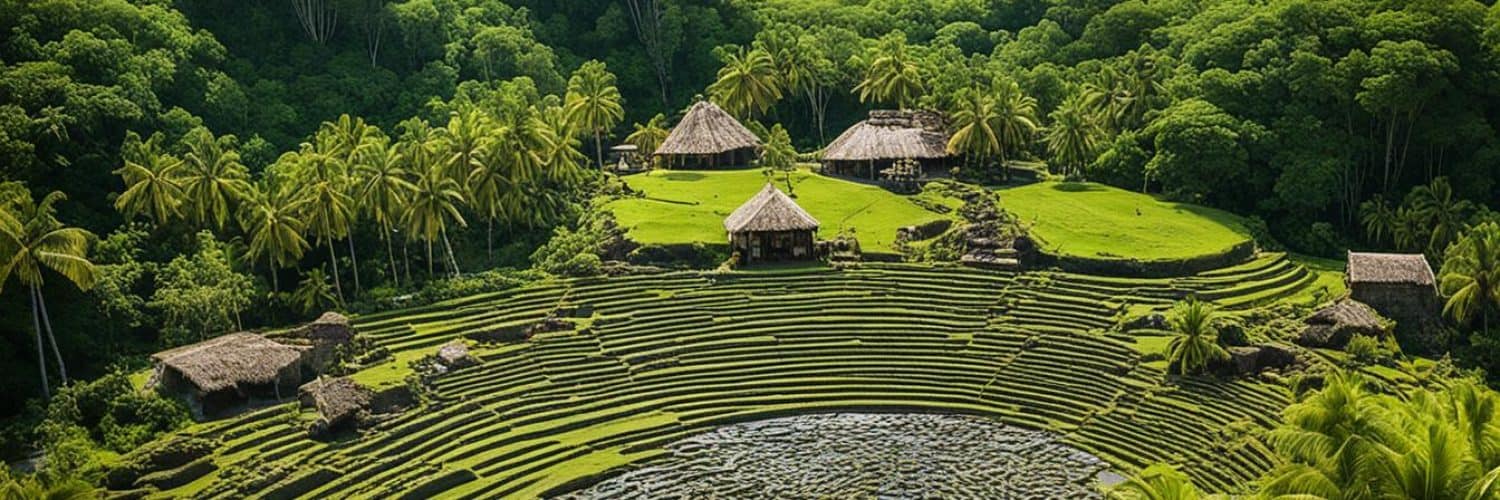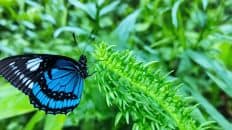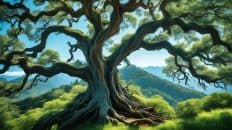Marinduque, known as “The Heart of the Philippines,” holds within its bounds a cultural treasure that whispers the stories of its indigenous community. Nestled in this province is the Indigenous Peoples Cultural Site, a sanctuary of ancestral traditions and a testament to the vibrant Marinduque culture. But how is this cultural heritage preserved? How are the indigenous rituals cherished and safeguarded for future generations? Let us embark on a journey through Marinduque’s rich heritage and uncover the secrets of this remarkable heritage site.
As we venture into the heart of Marinduque, we will discover the essence of the indigenous community, their profound connection to the land, and the tireless efforts made to conserve this precious cultural legacy. From ancient rituals passed down through generations to intricate craftsmanship showcased in traditional artifacts, Marinduque’s Indigenous Peoples Cultural Site is a testament to the resilience and beauty of indigenous cultures.
Key Takeaways:
- The Indigenous Peoples Cultural Site in Marinduque is a significant beacon for cultural preservation.
- Marinduque’s indigenous community showcases ancestral traditions and vibrant cultural heritage.
- Conservation efforts are being made to safeguard the indigenous rituals and artifacts for future generations.
- The Indigenous Peoples Cultural Site is a glimpse into the rich Marinduque culture and its indigenous roots.
- Explore the beauty and significance of Marinduque’s Indigenous Peoples Cultural Site and uncover the secrets of its cultural heritage.
Marinduque: Heart of the Philippines
Marinduque, often referred to as the Heart of the Philippines, is a provincial island located in the Region IV-B provinces. Surrounded by Oriental Mindoro and Quezon Province, Marinduque stands as a testament to the country’s rich cultural heritage. With a population primarily speaking Tagalog, the province is also influenced by the neighboring Bicol and Visayan provinces, creating a unique blend of traditions and cultures.
The people of Marinduque take immense pride in their ancestral roots and have preserved their cultural heritage for generations. The customs and traditions passed down by their ancestors are deeply woven into the fabric of their daily lives, providing a glimpse into the province’s history and identity. From vibrant festivals to traditional arts and crafts, Marinduque showcases a dynamic cultural landscape that is truly captivating.
As the Heart of the Philippines, Marinduque holds a special place in the hearts of its residents and visitors alike. Its cultural heritage, shaped by centuries of tradition, continues to thrive and remains an important part of the province’s identity.
Whether exploring the historical landmarks, indulging in local delicacies, or immersing oneself in the beauty of Marinduque’s natural wonders, visitors are sure to be enchanted by the province’s rich heritage and warm hospitality.
History and Archaeological Findings
Marinduque, the heart of the Philippines, has a rich historical background that shaped its cultural landscape. During the Spanish colonization, Marinduque was initially part of the Batangas Province before becoming part of Mindoro. It wasn’t until the American colonization that Marinduque gained its status as a separate province, with its first government established in Boac.
In the pursuit of uncovering Marinduque’s cultural treasures, anthropologist Fedor Jagor played a crucial role in the 1860s. He ventured into the province’s caves and made a fascinating discovery—elongated skulls. This finding sparked immense interest in the West, igniting the exploration of Marinduque’s intriguing past.
These elongated skulls have fascinated anthropologists and historians for years, providing valuable insights into the ancient inhabitants of Marinduque. The presence of these skulls suggests unique cultural practices and rituals among the early settlers of the province.
| Spanish Colonization | American Colonization |
|---|---|
| Marinduque was initially part of the Batangas Province. | Marinduque gained its status as a separate province, with its first government established in Boac. |
| Later became part of Mindoro. |
The discovery of elongated skulls in Marinduque sheds light on the province’s early history and the practices of its inhabitants. It highlights the importance of preserving and understanding the cultural heritage of Marinduque for future generations.
Notable Discoveries and Expeditions
In 1881, French explorer Antoine-Alfred Marche conducted the first systematic exploration of Marinduque, unearthing a wealth of fascinating artifacts that shed light on the ancient culture and traditions of the province. Among the notable discoveries were:
- Jars
- Figurines
- Golden jewelry
- Coffins
- Ceramics
Marche’s expeditions also revealed the presence of wooden coffins adorned with intricate carvings of crocodile images. These carvings bear a striking resemblance to those found in Madagascar, further highlighting the cultural connections and influences that shaped Marinduque’s history.
Beliefs and Cultures
Marinduque’s present-day residents have retained rich cultural traditions that are centuries old. One of the most significant cultural events in Marinduque is the Moriones Festival, a week-long Lenten event.
This festival features locals dressed in colorful Moriones masks, reenacting the story of a Roman soldier named Longinus. The province also has a blend of Morionism, a belief system that centers around the purification and glorification of the soul.
The artistic craftsmanship of the Marinduqueños is evident in their creation of Moriones masks and other traditional artifacts.
“The Moriones Festival is a vibrant celebration that brings together our community to honor our cultural heritage and showcase our intricate artistry. The Moriones masks, crafted with meticulous detail, truly represent our devotion and commitment to our ancestors.”
– Local artisan, Marinduque
Marinduque’s Moriones Masks
Marinduque artistry shines through the creation of Moriones masks, which play a central role in the Moriones Festival. These masks are meticulously handcrafted by skilled artisans, showcasing the intricate details and vibrant colors that make them unique.
The Moriones masks are made using traditional techniques passed down through generations, highlighting the craftsmanship and artistry that Marinduque is known for. Each mask tells a story, capturing the spirit and essence of the festival and the rich cultural traditions of the province.
To create these magnificent masks, local artisans meticulously carve and paint pieces of wood, transforming them into stunning works of art. The masks depict various characters from the story of Longinus, including Roman soldiers, knights, and biblical figures.
The Moriones masks have become iconic symbols of Marinduque, attracting visitors from near and far who are captivated by the beauty and cultural significance they represent.
Marinduque’s Cultural Identity
In addition to the Moriones Festival, Marinduque’s cultural landscape is enriched by various beliefs and traditions. The province is home to a diverse range of spiritual practices, including the veneration of anitos, spirit beings believed to possess supernatural powers.
Marinduque also has its share of local mythologies and legends, with stories of mythical creatures like aswangs, shape-shifting creatures that often take on the form of witches or vampires, believed to inhabit the province.
These mystical tales and traditions, combined with the province’s strong Christian influence, create a unique tapestry of belief systems that shape Marinduque’s cultural identity.
| Beliefs and Traditions | Key Features |
|---|---|
| Moriones Festival | Week-long Lenten celebration featuring locals dressed in colorful Moriones masks, reenacting the story of Longinus. |
| Morionism | Blend of beliefs centered around the purification and glorification of the soul in Marinduque. |
| Marinduque Artistry | Skilled craftsmanship displayed in the creation of Moriones masks and other traditional artifacts. |
| Anitos | Belief in spirit beings with supernatural powers, venerated in Marinduque. |
| Aswangs | Mythical creatures that inhabit Marinduque, often depicted as witches or vampires. |
Artistry and Innovation
The people of Marinduque are renowned for their exceptional creativity, resourcefulness, and craftsmanship. Whether it’s the intricate handcrafted Moriones masks or the beautiful Torrijos weaving using Buntal fibers, the artistry of the locals is truly remarkable.
In the town of Torrijos, residents have mastered the traditional art of weaving using Buntal fibers. These fibers are skillfully transformed into mats and wall decorations that showcase the ingenuity and skill of the craftsmen.
Marinduque is also famous for its exquisite earthenware, which is meticulously handcrafted using clay from the province’s swamps. These clay masterpieces reflect the rich cultural heritage of Marinduque and serve as a testament to the craftsmanship mastered by the locals.
When tourists and locals return to Marinduque, they are welcomed with a special celebration called “putong.” During this ceremony, blessings in the form of coins are showered upon the visitors as a symbol of good luck and prosperity.
Moreover, Marinduque is a haven for delectable traditional delicacies. The province is known for its irresistibly delicious arrowroot cookies and kakanin, mouthwatering rice-based treats that delight the taste buds of locals and visitors alike.
Artistry and Innovation Highlights:
- Intricately handcrafted Moriones masks
- Expert Torrijos weaving using Buntal fibers
- Exquisite earthenware made from swamp clay
- Special celebration of “putong” with blessings of coins
- Delectable arrowroot cookies and kakanin
Witnessing the artistry and innovation of Marinduque’s people is a captivating experience. Their skill and creativity are deeply rooted in the province’s cultural heritage, making Marinduque a truly remarkable destination.
Natural Wonders
Marinduque, also known as the Butterfly Capital of the Philippines, is a province blessed with breathtaking natural wonders that allure travelers from around the globe. From idyllic beaches to magnificent caves and enchanting islands, Marinduque offers a paradise of exploration and adventure.
Maniwaya Island
One of the province’s hidden gems is Maniwaya Island, a tropical paradise with pristine white sandy beaches and crystal clear blue waters. Here, visitors can bask in the sun, take refreshing dips in the sea, and indulge in various water sports activities. Its tranquil ambiance makes it an ideal getaway for beach lovers.
Bathala Cave
Near Santa Cruz, adventurers can explore the awe-inspiring Bathala Cave, a captivating underground cave system. Adorned with stunning stalagmites, stalactites, and an underground river, Bathala Cave offers a memorable spelunking experience.
Tres Reyes Islands
The Tres Reyes Islands, consisting of Gaspar Island, Melchor Island, and Baltazar Island, are a haven for island hopping enthusiasts. Each island boasts its own unique charm, with pristine beaches, turquoise waters, and breathtaking vistas. Embark on an island-hopping adventure and discover the beauty of these paradisiacal islands.
“Marinduque’s natural wonders showcase the province’s captivating beauty and provide visitors with unforgettable experiences that encompass adventure, relaxation, and awe-inspiring natural landscapes.”
Mt. Malindig
Rising majestically as the highest peak in Marinduque, Mt. Malindig offers avid hikers and nature enthusiasts breathtaking panoramic views. The challenging trek rewards adventurers with stunning vistas of the surrounding landscapes, making it a must-visit destination for outdoor enthusiasts.
Malbog Hot Springs
For a relaxing retreat, the Malbog Hot Springs in Buenavista is the perfect destination. Immerse yourself in the warm, therapeutic waters and let the soothing properties melt away your stress and worries. The hot springs provide a serene escape amidst the province’s natural beauty.
Marvel at the natural wonders of Marinduque, be it the captivating Butterfly Capital of the Philippines, the tranquil Maniwaya Island, the enchanting Bathala Cave, the picturesque Tres Reyes Islands, the majestic Mt. Malindig, or the peaceful Malbog Hot Springs. Explore and embrace the gifts that nature has bestowed upon this remarkable province.
Marinduque’s Historical Landmarks
Marinduque, a province with a rich colonial past, is home to several historical landmarks that offer a glimpse into its fascinating history. From magnificent churches to mysterious caves, these landmarks reflect the province’s cultural heritage and architectural wonders.
Boac Cathedral
The Boac Cathedral, built in 1792, is a true gem that showcases the Filipino-Hispanic Gothic architectural style. Standing tall in the heart of Boac, this magnificent church is a testament to Marinduque’s rich Spanish colonial history. Its intricate design and grandeur make it a must-visit for history enthusiasts and architecture lovers.
Spanish Church in Santa Cruz
In Santa Cruz, visitors can explore a Spanish church that dates back to 1714. This historical landmark provides a glimpse into the religious heritage of Marinduque. As you step inside, you’ll be transported back in time, surrounded by the majesty of its traditional Spanish colonial architecture.
Bathala Caves
For those seeking adventure and mystery, the Bathala Caves complex offers an unforgettable experience. Located near Santa Cruz, this site is known for its tall limestone formations and underground river. As you navigate the caves and marvel at the fascinating geological wonders, you’ll feel a sense of awe and wonder at the natural beauty of Marinduque.
Laylay Port
No trip to Marinduque is complete without a visit to Laylay Port in Boac. This port not only provides insight into the local way of life but also offers stunning coastal views. Take a leisurely stroll along the harbor, soak in the fresh sea breeze, and capture beautiful moments against the backdrop of the picturesque surroundings.
| Landmark | Location | Description |
|---|---|---|
| Boac Cathedral | Boac | An architectural masterpiece showcasing the Filipino-Hispanic Gothic style. |
| Spanish Church in Santa Cruz | Santa Cruz | A historical church that provides a glimpse into Marinduque’s religious heritage. |
| Bathala Caves | Santa Cruz | A complex of caves with tall limestone formations and an enchanting underground river. |
| Laylay Port | Boac | A scenic port offering coastal views and insight into the local way of life. |
Getting to Marinduque
Traveling to Marinduque can be done through various transportation options. Visitors have the choice between flights and ferry services, depending on their preference and accessibility.
Flights to Marinduque
If you prefer air travel, flights are available from Manila to Marinduque Airport. This option offers a convenient way to reach the province, especially for those who are short on time or prefer a quicker journey.
Ferry Services to Marinduque
For travelers looking for a more scenic experience, ferry services operate from Lucena City in Quezon Province to Marinduque. This mode of transportation allows you to enjoy the beautiful coastal views along the way.
Whether you choose to fly or take the ferry, both options provide access to Marinduque, allowing you to embark on an exciting adventure in this enchanting province.
| Transportation Option | From | To | Duration |
|---|---|---|---|
| Flights | Manila | Marinduque Airport | Approximately 1 hour |
| Ferry | Lucena City, Quezon Province | Marinduque | Approximately 3 hours |
Popular Tourist Spots in Marinduque
Marinduque offers a plethora of popular tourist spots that capture the beauty and charm of the province. Whether you’re a nature enthusiast, history buff, or beach lover, Marinduque has something for everyone. Let’s explore some of the top attractions that make Marinduque a must-visit destination.
Moriones Festival
The Moriones Festival is a vibrant cultural event that showcases the rich traditions and history of Marinduque. Held annually during Holy Week, this festival features locals dressed in colorful Moriones masks, recreating the story of a Roman soldier named Longinus. It is an unforgettable experience that immerses visitors in the unique culture and folklore of Marinduque.
Tres Reyes Islands
The Tres Reyes Islands, consisting of Gaspar Island, Melchor Island, and Baltazar Island, are a paradise for island hopping and beach exploration. Each island offers stunning views, crystal-clear waters, and pristine sandy beaches. Whether you’re looking to relax on the shores or snorkel and explore underwater wonders, the Tres Reyes Islands are a must-visit destination in Marinduque.
Boac Cathedral
The Boac Cathedral, built in 1792, is a magnificent Spanish church that stands as a testament to Marinduque’s rich colonial history. Its Filipino-Hispanic Gothic architecture and captivating interiors make it a must-visit landmark for history and architecture enthusiasts.
Maniwaya Island
If you’re longing for a tropical getaway, Maniwaya Island is the perfect destination. Known for its white sandy beaches and crystal-clear waters, Maniwaya Island offers a serene and picturesque paradise. Relax on the beach, swim in the inviting waters, or go island hopping to neighboring islands for a memorable experience.
Bathala Caves
For adventure seekers and nature enthusiasts, Bathala Caves is a must-visit attraction in Marinduque. Explore the intricate cave system, marvel at the stalagmites and stalactites, and take a boat ride along the underground river. Discover the hidden wonders of Bathala Caves and immerse yourself in its natural beauty.
Poctoy White Beach
Located in the town of Torrijos, Poctoy White Beach is a pristine stretch of sandy coastline that offers a peaceful retreat. With its calm waters and breathtaking views, Poctoy White Beach is the perfect destination for sunbathing, swimming, beach picnics, and enjoying the beauty of nature.
| Popular Tourist Spots | Description |
|---|---|
| Moriones Festival | An annual cultural event featuring locals dressed in colorful Moriones masks, celebrating Marinduque’s rich traditions and history. |
| Tres Reyes Islands | A group of three islands (Gaspar Island, Melchor Island, and Baltazar Island) offering stunning beaches and opportunities for island hopping and water activities. |
| Boac Cathedral | A magnificent Spanish church dating back to 1792, showcasing Filipino-Hispanic Gothic architecture and serving as a historical landmark. |
| Maniwaya Island | A tropical paradise known for its white sandy beaches, crystal-clear waters, and opportunities for relaxation and island hopping. |
| Bathala Caves | An adventurous destination with a fascinating cave system, featuring stalagmites, stalactites, and an underground river. |
| Poctoy White Beach | A serene and picturesque beach in Torrijos, offering a tranquil escape and opportunities for sunbathing, swimming, and beach picnics. |
These popular tourist spots in Marinduque are just a glimpse of what the province has to offer. Whether you’re exploring the cultural heritage, indulging in outdoor adventures, or simply enjoying the beauty of nature, Marinduque is a destination that will leave you captivated and wanting to come back for more.
What to See in Marinduque
Marinduque offers a wide array of sights and attractions that showcase the province’s rich culture, history, and natural beauty. From vibrant festivals to magnificent architectural landmarks and breathtaking landscapes, there is something for everyone to enjoy in Marinduque.
1. Moriones Festival
The Moriones Festival is a must-see event in Marinduque. This colorful festival takes place during Holy Week and features locals dressed in intricately crafted Moriones masks and costumes. The festival brings to life the story of Longinus, a Roman soldier, and immerses visitors in the unique local culture and history.
2. Boac Cathedral
The Boac Cathedral, also known as the Cathedral Parish of Our Lady of Immaculate Conception, is a magnificent architectural landmark in Marinduque. Built in 1792, this Spanish colonial church showcases Filipino-Hispanic Gothic architecture and is a testament to the province’s colonial heritage.
3. Tres Reyes Islands
The Tres Reyes Islands, comprising Gaspar Island, Melchor Island, and Baltazar Island, are a haven for island hopping and beach exploration. Each island offers its unique charm, with pristine sandy beaches, crystal clear waters, and breathtaking views. Whether you’re looking for relaxation or adventure, the Tres Reyes Islands have it all.
4. Bathala Cave
For those seeking adventure and natural wonders, Bathala Cave is a must-visit destination in Marinduque. Located near Santa Cruz, this cave system is adorned with beautiful stalagmites, stalactites, and an underground river. Explore the hidden depths and marvel at the stunning formations that nature has created over thousands of years.
5. Maniwaya Island
Maniwaya Island is a tropical paradise with its white sandy beaches, crystal clear waters, and tranquil ambiance. Whether you want to relax on the beach, swim in the pristine waters, or indulge in water sports activities like snorkeling and kayaking, Maniwaya Island offers a serene escape from the hustle and bustle of everyday life.
6. Mt. Malindig
For outdoor enthusiasts and hikers, Mt. Malindig is a must-visit destination in Marinduque. As the highest peak on the island, Mt. Malindig offers breathtaking panoramic views of the surrounding landscapes. Embark on an exhilarating hike to the summit and immerse yourself in the beauty of nature.
7. Poctoy White Beach
Poctoy White Beach is a stunning stretch of white sand beach that offers a picturesque setting for relaxation and sunbathing. With its crystal clear waters and palm-fringed shoreline, this beach is a hidden gem in Marinduque. Unwind, soak up the sun, and revel in the beauty of this pristine beach.
Immerse yourself in the vibrant festivals, explore the architectural wonders, and embrace the natural beauty that Marinduque has to offer. Whether you’re an adventure seeker, history enthusiast, or beach lover, Marinduque promises a fulfilling and unforgettable experience.
| Attraction | Description |
|---|---|
| Moriones Festival | A vibrant festival featuring locals wearing Moriones masks and costumes during Holy Week. |
| Boac Cathedral | A magnificent Spanish colonial church showcasing Filipino-Hispanic Gothic architecture. |
| Tres Reyes Islands | Gaspar Island, Melchor Island, and Baltazar Island offer stunning beaches and scenic views. |
| Bathala Cave | A cave system with beautiful stalagmites, stalactites, and an underground river. |
| Maniwaya Island | A tropical paradise with white sandy beaches and crystal clear waters. |
| Mt. Malindig | The highest peak in Marinduque, offering panoramic views of the surrounding landscapes. |
| Poctoy White Beach | A pristine stretch of white sand beach perfect for relaxation and sunbathing. |
Conclusion
Marinduque, with its rich cultural heritage, stunning natural wonders, and historical landmarks, is truly a hidden gem in the heart of the Philippines. The province’s unwavering commitment to cultural preservation ensures that the indigenous traditions and customs are not only celebrated but also passed down to future generations.
From the moment you set foot in Marinduque, you will be captivated by its breathtaking landscapes, ranging from pristine beaches to enchanting caves. The province’s historical landmarks, such as the Boac Cathedral and Spanish churches, provide a glimpse into its colonial past and architectural beauty.
But it is the warmth and artistry of the Marinduqueños that truly make this destination special. Through their craftsmanship, seen in intricate Moriones masks and traditional weaving using Buntal fibers, Marinduque showcases its vibrant culture and heritage.
Whether you are exploring the natural wonders, immersing yourself in indigenous traditions, or marveling at the historical landmarks, Marinduque promises a unique and unforgettable experience. This hidden paradise is a must-visit for anyone seeking to uncover the beauty and diversity of the Philippines.


















Add comment